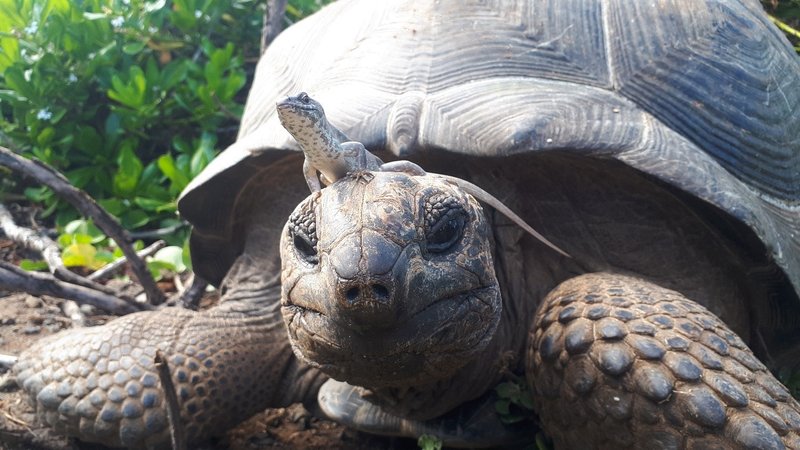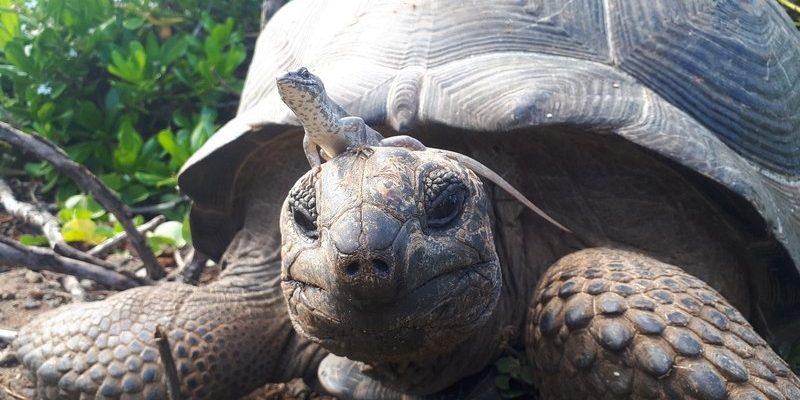
When we talk about the Aldabra giant tortoise’s conservation status, it’s essential to understand the delicate balance of their ecosystem. Think of it like a complex web; if one strand snaps, the entire structure could falter. So, let’s dive into what makes this tortoise special, the challenges it faces, and the ongoing conservation efforts aimed at protecting this majestic species.
What is the Aldabra Giant Tortoise?
The Aldabra giant tortoise is one of the largest tortoises in the world. They can weigh over 500 pounds and live for more than 100 years. Imagine having a pet that could outlast your great-grandchildren! With their domed shells and sturdy legs, they’re built for life in a rough environment. The Aldabra Atoll, where they live, is a UNESCO World Heritage site, known for its unique flora and fauna.
These tortoises play a vital role in their ecosystem. They help shape the landscape by eating grass and other vegetation, and their droppings provide essential nutrients for the soil. It’s like they are nature’s gardeners, maintaining the balance of their habitat. However, their slow reproduction rate makes it challenging for their populations to recover when faced with threats.
Are Aldabra Giant Tortoises Endangered?
The good news is that the Aldabra giant tortoise is not currently classified as endangered by the IUCN (International Union for Conservation of Nature). Instead, they’re listed as vulnerable. This status means they’re at risk but not yet facing immediate extinction.
But why the vulnerability? Well, there were times in history when these tortoises were heavily hunted for their meat and shells. On top of that, habitat destruction, climate change, and invasive species pose significant risks. Here’s the thing: even if they’re not endangered right now, their future survival is by no means guaranteed.
Threats to the Aldabra Giant Tortoise
Several factors threaten the survival of the Aldabra giant tortoise. Let’s break down the most pressing issues:
- Habitat Loss: As human development expands, the natural habitats of these tortoises can shrink. This is a concern, especially as climate change alters ecosystems.
- Invasive Species: Animals such as rats and goats can disrupt the tortoise population. They compete for food and can even prey on eggs and hatchlings.
- Climate Change: Rising sea levels and changing weather patterns threaten the very islands these tortoises call home. If their habitat becomes unsuitable, it could spell disaster for their survival.
Each of these threats is like a storm cloud hanging over the future of the Aldabra giant tortoise. If left unaddressed, they can lead to declines in population and biodiversity.
Conservation Efforts for Aldabra Giant Tortoises
Fortunately, various conservation efforts are underway to protect the Aldabra giant tortoise. The Seychelles Islands Foundation manages the Aldabra Atoll, working to maintain its ecosystem and ensure the well-being of the tortoises.
Here are some of the key actions being taken:
- Protection of Habitats: By managing the atoll as a protected area, conservationists work to preserve the tortoises’ natural environment from human intrusion.
- Monitoring Populations: Researchers regularly conduct population assessments to keep track of their numbers and health, allowing for timely interventions if necessary.
- Education and Community Engagement: It’s crucial to educate local communities about the importance of tortoises. Involving locals in conservation efforts creates a sense of ownership and responsibility.
These actions resemble a lifeline thrown to the tortoises, ensuring they have a fighting chance for survival.
The Role of Ecotourism in Conservation
Ecotourism can make a significant difference in the conservation of the Aldabra giant tortoise. When visitors come to see these magnificent creatures, they contribute financially to their protection. It’s like a win-win situation—travelers get to enjoy a unique experience while supporting conservation efforts.
Here’s how it works:
- Revenue Generation: Entry fees and donations from tourists can fund conservation projects, habitat restoration, and educational programs.
- Awareness Raising: Tourists leave with a greater understanding of the tortoises’ plight and the importance of preserving their habitat.
- Community Support: When locals see the benefits of ecotourism, they’re more likely to get involved in conservation efforts themselves.
By tapping into the power of ecotourism, the future of the Aldabra giant tortoise looks a bit brighter.
So, is the Aldabra giant tortoise endangered? Not quite, but they are vulnerable and need our help. With ongoing conservation efforts, community involvement, and mindful tourism, we can ensure these ancient beings continue to thrive on their beautiful islands.
Protecting the Aldabra giant tortoise isn’t just about saving one species; it’s about maintaining the delicate balance of an entire ecosystem. Every small action counts, whether it’s spreading awareness, supporting conservation organizations, or simply appreciating these remarkable creatures. Together, we can help ensure that future generations will also marvel at the wonder of the Aldabra giant tortoise.

